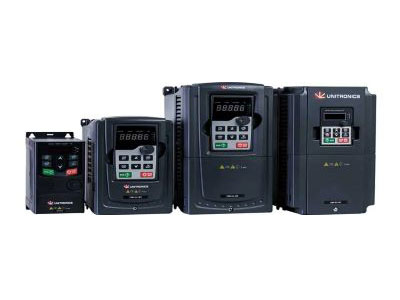Key Takeaway
A Variable Frequency Drive (VFD) operates by converting AC power, typically at 60 Hz frequency, into DC power using a rectifier circuit. This DC power passes through a DC bus where its voltage is further filtered. Next, the inverter within the VFD converts the filtered DC power back into AC form. The inverter generates pulses of DC energy that mimic the characteristics of AC current, but with adjustable frequency and voltage. By varying these parameters, VFDs control the speed and torque of AC motors effectively. This principle allows precise regulation of motor operation, enhancing efficiency and enabling applications across various industries like manufacturing and HVAC systems.
Basic Operating Principle of VFDs
The basic principle of a VFD revolves around controlling the speed and torque of electric motors by varying the frequency and voltage supplied to them. VFDs convert the fixed frequency of the power supply to a variable frequency output, allowing for adjustable motor speeds. This conversion is achieved through rectification of AC to DC and then inversion of DC back to a controlled AC signal. By adjusting the output frequency, VFDs can smoothly ramp up motor speeds, which minimizes mechanical stress and enhances efficiency.

Power Conversion and Control Mechanisms
VFDs use advanced power electronics to convert and control power for motor operation. The process begins with the rectifier, which converts AC input into DC. This DC voltage is then directed into an inverter. The inverter’s role is to generate an AC output with the desired frequency and voltage.
A common technique used in the inverter stage is Pulse Width Modulation (PWM). PWM creates a smooth and precise AC signal by adjusting the width of the pulses in the DC voltage. This controlled output enables the motor to operate at different speeds and torques, matching the specific demands of the application.
By precisely controlling the power conversion, VFDs ensure efficient and flexible motor performance. This adaptability is crucial in various industrial applications, allowing for optimized operation and energy savings. Understanding these mechanisms is essential for engineers to effectively implement and maintain VFD systems in their projects.
You May Like to Read
Role of Frequency and Voltage Adjustment
The primary function of a VFD (Variable Frequency Drive) is to adjust the frequency and voltage supplied to the motor. This adjustment directly influences the motor’s speed and torque. When you lower the frequency, the motor speed decreases. Conversely, increasing the frequency raises the motor speed. Adjusting the voltage ensures the motor operates optimally and efficiently.
VFDs are essential in applications requiring variable speeds and precise control. By fine-tuning motor operations, VFDs provide significant benefits. One of the main advantages is energy savings since motors only consume power as needed. This capability is particularly beneficial in industries where process control and energy efficiency are critical.
Moreover, the precise control offered by VFDs enhances the performance of motor-driven systems. This leads to improved product quality and reduced wear and tear on mechanical components. For new engineers, understanding the role of frequency and voltage adjustment in VFDs is crucial. It helps in optimizing motor performance and achieving energy efficiency in various industrial applications.
Applications of VFD Principles in Industry
Variable Frequency Drives, play a crucial role in a variety of industrial applications due to their ability to control motor speed and improve efficiency. In pumps and fans, VFDs provide precise speed control, which is essential for processes requiring varying flow rates and pressures. For conveyors, VFDs offer smooth and adjustable speed settings, enhancing material handling and reducing mechanical stress.
In the manufacturing sector, VFDs improve process control, leading to better product quality and consistency. They also reduce wear and tear on machinery by optimizing motor speed to match the specific demands of each task. This results in lower maintenance costs and extended equipment life.
HVAC systems benefit significantly from VFDs as well. By regulating airflow and temperature, VFDs contribute to substantial energy savings and create more comfortable environments. Their adaptability to different operational requirements makes them indispensable in modern industry.
Furthermore, VFDs enhance the overall efficiency and sustainability of industrial operations by reducing energy consumption and lowering carbon footprints. Their versatility and ability to provide precise control make them essential tools for optimizing performance across various applications.
Advantages of VFD Principles in Operation
The implementation of VFDs in industrial operations offers numerous advantages. One of the primary benefits is energy efficiency. VFDs adjust motor speed to match the actual load, significantly reducing energy consumption and operational costs. This is especially beneficial in applications where load demands vary throughout the day.
Another advantage is the smooth start-up and shut-down capabilities of VFDs. This feature minimizes mechanical stress on equipment, extending its lifespan and reducing maintenance needs. For instance, pumps and fans experience less wear and tear, resulting in fewer breakdowns and lower repair costs.
Additionally, VFDs contribute to improved process control and product quality. They allow for precise adjustments in motor performance, ensuring consistent operation and optimal conditions for various processes. This precision helps in maintaining high standards of product quality, which is crucial in industries like manufacturing and processing.
Conclusion
Grasping the principles of VFDs is fundamental for engineers aiming to optimize industrial processes. VFDs provide the ability to control motor speed and torque with precision, leading to enhanced efficiency, reduced energy consumption, and improved operational performance. By leveraging the power of frequency and voltage adjustment, industries can achieve better control over their applications, ensuring both economic and environmental benefits. As an engineer, mastering VFD principles equips you with the knowledge to drive innovation and efficiency in various industrial settings.
